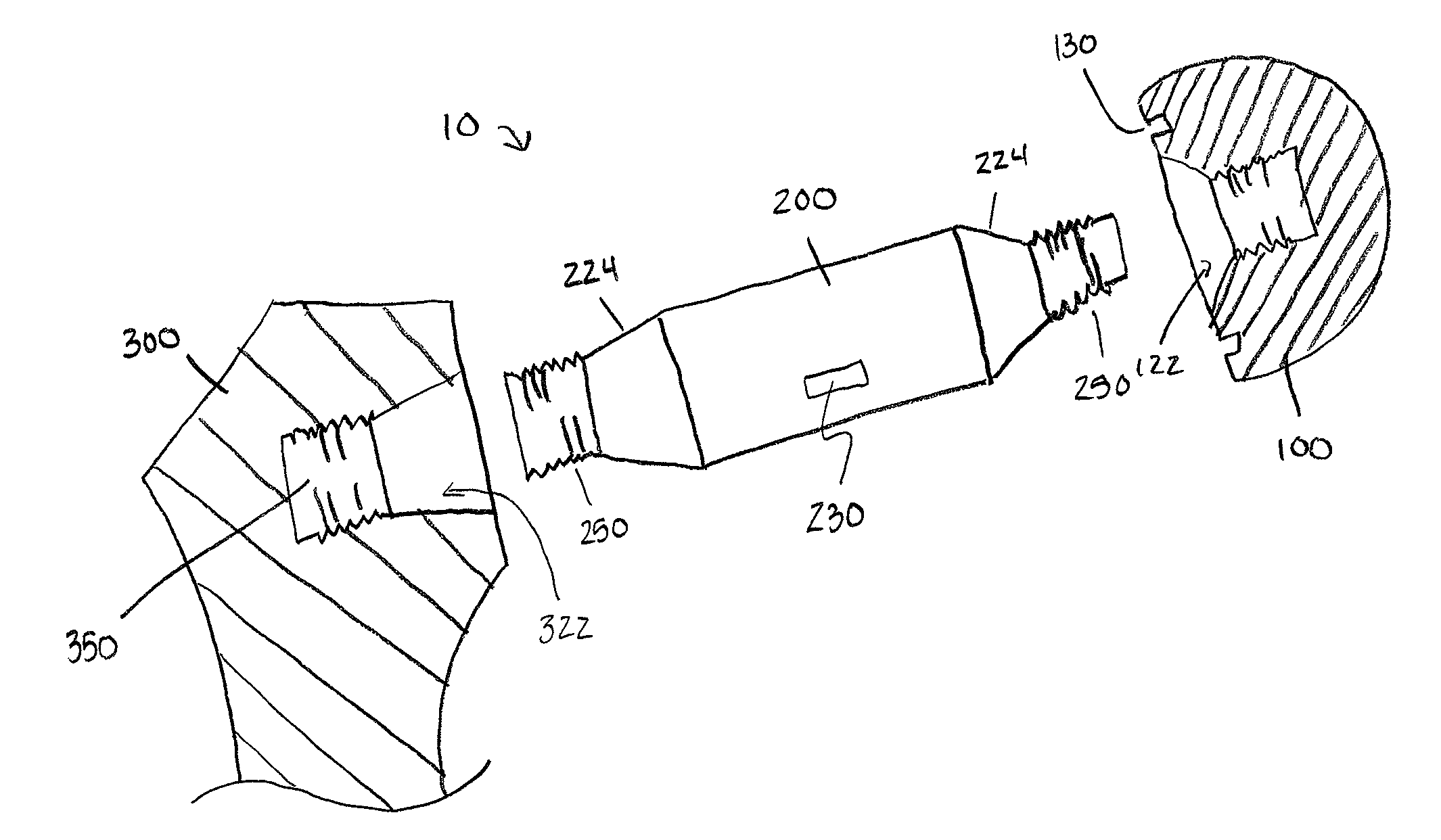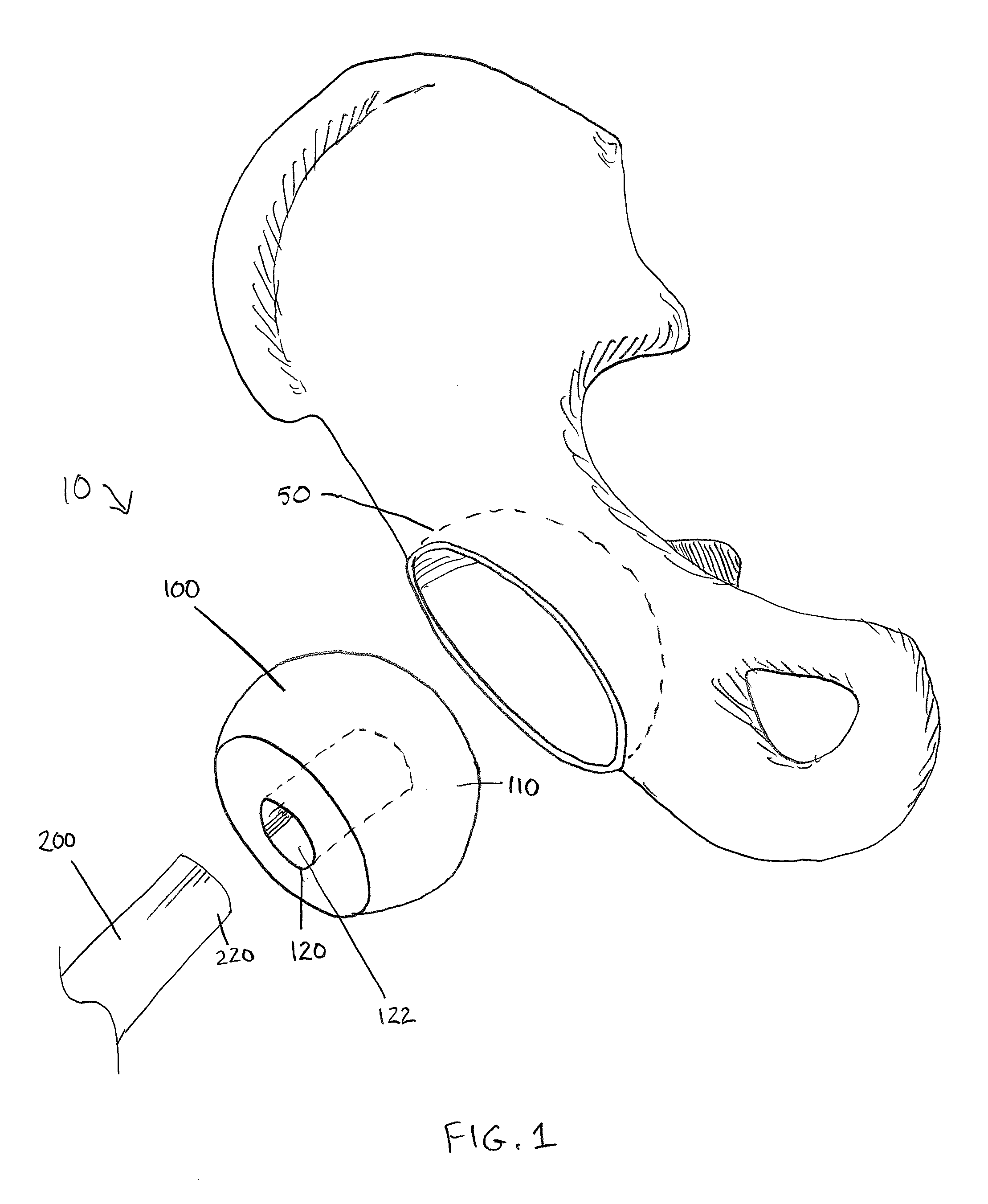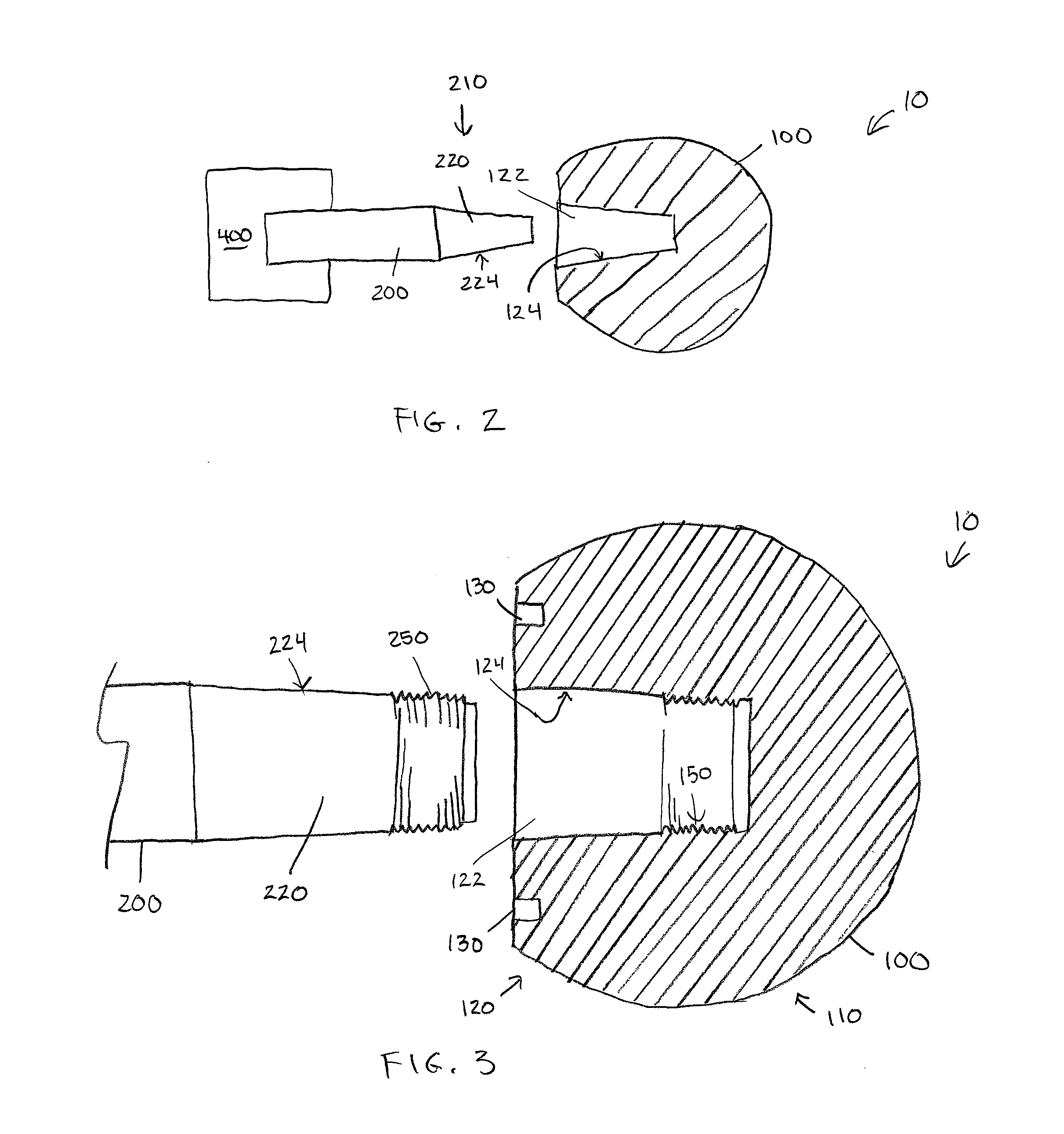Method and apparatus for attachment in a modular hip replacement or fracture fixation device
a modular, hip replacement technology, applied in the field of medical methods and equipment, can solve the problems of affecting the quality of hip replacement, the failure of conventional hip replacement implants, and the release of debris or corrosion from implants, so as to improve the quality, reliability, and compatibility of implantation systems.
- Summary
- Abstract
- Description
- Claims
- Application Information
AI Technical Summary
Benefits of technology
Problems solved by technology
Method used
Image
Examples
Embodiment Construction
[0031]While the present description sets forth specific details of various embodiments, it will be appreciated that the description is illustrative only and should not be construed in any way as limiting. Additionally, it is contemplated that although particular embodiments of the present inventions may be disclosed or shown in the context of hip surgeries, such as total hip arthroplasty or hemiarthroplasty, such embodiments can be used in other surgical techniques and devices. Furthermore, various applications of such embodiments and modifications thereto, which may occur to those who are skilled in the art, are also encompassed by the general concepts described herein.
[0032]Embodiments of the methods, systems, components, and devices disclosed herein can be used for various joints of the body, such as the shoulder, hip, and the like. As discussed in the above-noted publications, joint replacements for the hip are common and have several factors that can be considered when designin...
PUM
 Login to View More
Login to View More Abstract
Description
Claims
Application Information
 Login to View More
Login to View More - R&D
- Intellectual Property
- Life Sciences
- Materials
- Tech Scout
- Unparalleled Data Quality
- Higher Quality Content
- 60% Fewer Hallucinations
Browse by: Latest US Patents, China's latest patents, Technical Efficacy Thesaurus, Application Domain, Technology Topic, Popular Technical Reports.
© 2025 PatSnap. All rights reserved.Legal|Privacy policy|Modern Slavery Act Transparency Statement|Sitemap|About US| Contact US: help@patsnap.com



